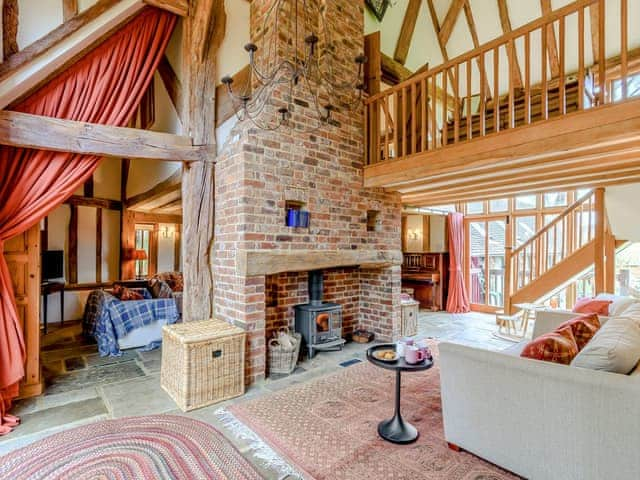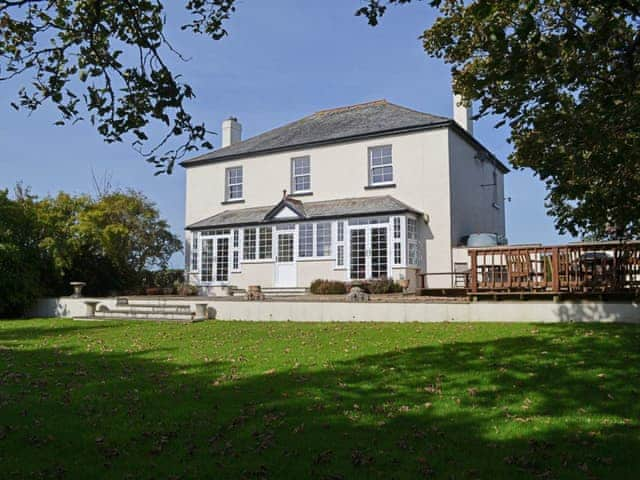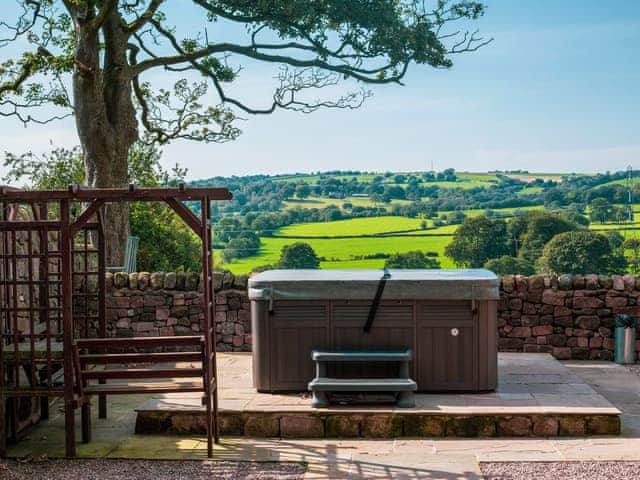
Renting holiday houses in South Wales
Self-catering cottages in South Wales - Cardiff, Swansea and Neath and friendly Welsh villages with great pubs, mountains and beaches.
Self-catering cottages in South Wales
South Wales may be acknowledged as one of the most densely populated region in the south UK. However, this owes itself more to the fact that the two principal Welsh cities - the capital city Cardiff and Swansea, and the substantial town of Neath are all located there.
However, there is so much to see and do in South Wales. Whether you prefer a holiday with the benefits of the city available from either or both of these two very Europan cities, or a holiday with plenty of rolling countryside, magical castles, idyllic sea side offerings and wonderful rural retreats, the self-catering visitor will not be left wanting.
If your interests extend to some of the great castles of Wales, the region is knee-deep in some of the most famous from Welsh history. Ogmore Castle, built in 1116 by one of the legendary Twelve Knights of Glamorgan, can be found in beautiful rural location of Ogmore-by-Sea on the south bank of the River Ewenny.
The beautiful village of Oxwich, on the beach-lined Gower Peninsula, has not only the Tudor Oxwich Castle, but Penrice Castle and Oxwich Burrows National Nature Reserve. The area is also very popular for watersports, including sailing, water skiing, diving, windsurfing and of course swimming.
The preserved remains of Grosmont Castle on the Welsh/English border some eight miles northeast of Abergavenny are worth a visit, and Skenfrith and White Castles are nearby. There are many others within easy reach.
South Wales covers some of the most beautiful parts of the Welsh coast. There are gorgeous big self-catering holiday homes in the Gower Peninsula where you can enjoy the unspoilt countryside and award-winning beaches. Holiday cottages in the Mumbles and Afan and the Vale of Neath are plentiful and the walking, watersports and cycling in the area are fabulous. You can stay in a cottage near Swansea and enjoy the city's many attractions and maritime history; or rent an apartment in vibrant Cardiff, the capital of Wales. Cardiff is a delightful blend of castles and museums and stunning modern architecture - apartments overlooking the picturesque waterfront are very popular.
Holiday homes for rent in South Wales
Do you want a walking, coastal holiday - beautiful secluded beaches or rural locations, or a busy night life in a bustling harbour town and places to visit steeped in ancient history? - South Wales has it all.

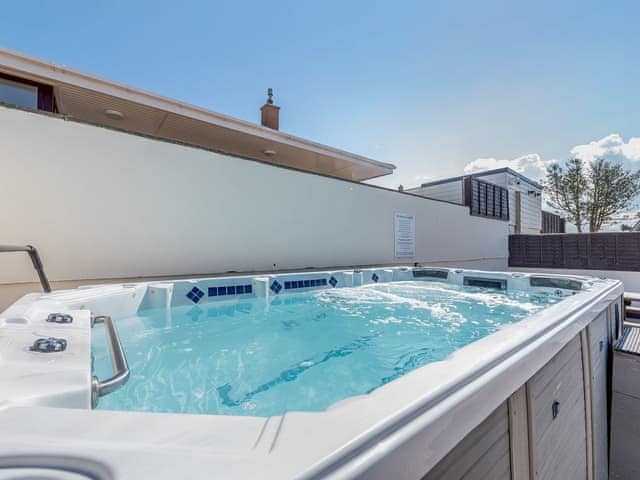
Holiday home in Cardigan/Ceredigion near Cardigan with 5 bedrooms, sleeps 10, Pet friendly, Golf nearby, Pub within 1 mile, Sea View, Baby and Toddler Friendly, Cot Available.
View Sandbank - 18585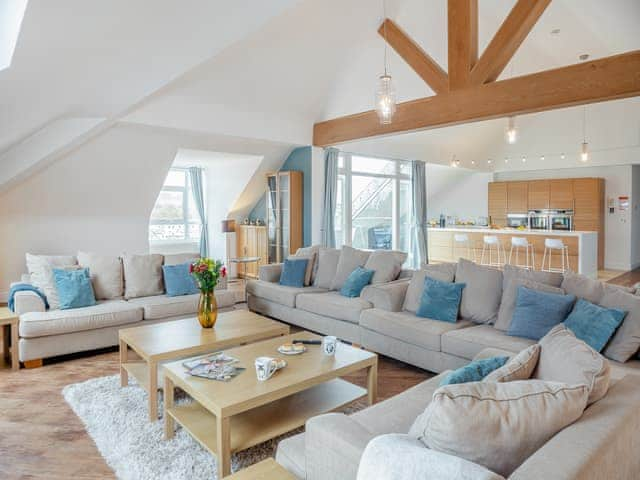
Large rental cottage in Gwynedd near Nefyn with 5 bedrooms, sleeps 10, Pet friendly, Golf nearby, Pub within 1 mile, Cot Available.
View The Penthouse
Luxury accommodation in Cardigan/Ceredigion near Cardigan with 5 bedrooms, sleeps 10, Pet friendly, Golf nearby, Pub within 1 mile, Sea View, Baby and Toddler Friendly, Cot Available.
View Hafdir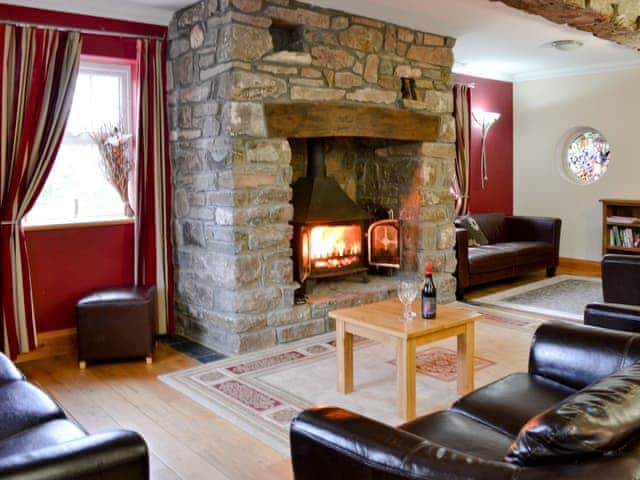
Big house to rent in Carmarthenshire near Kidwelly with 6 bedrooms, sleeps 15, Pet friendly, Barbecue, Pub within 1 mile, Cot Available, Swimming Pool, All En-suite, Gym.
View Ty-canol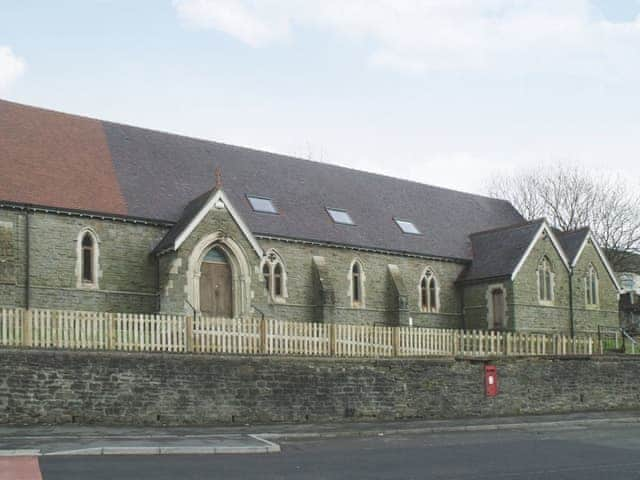
A unique large holiday home in Glamorgan near Swansea with 5 bedrooms, sleeps 10, Pet friendly, Golf nearby, Pub within 1 mile, Cot Available.
View St Albans Church - 28165Self-catering vacations in Cardiff, South Wales
It would be a shame to visit South Wales and not take a trip into Cardiff, the capital city, main commercial centre of Wales and home to so many Welsh sporting and cultural institutions. Truly a European city, it is also home to the National Assembly of Wales, located on the new waterfront area of the city. Also worth noting is that while it is the capital of Wales, it is also the county town of Glamorgan county - a great achievement for a town that was only made a city in 1905 and the country's capital as recently as 1955.
There are several famous international sporting venues in Cardiff, the most notable being the Millennium Stadium (home of Welsh football and rugby union), the Cardiff City Stadium (sports and concert events) and the SWALEC Stadium (cricket). For a small admission charge, you can soak up the wonderful atmosphere of these great venues for yourself.
For those who can't manage without their retail therapy, it is worth noting that Cardiff is the sixth best city in the United Kingdom for shopping, competing and even surpassing cities such as Leeds, Edinburgh and Newcastle upon Tyne. The St David's Centre is acknowledged as one of the largest shopping centres in the UK. Together with modern retail space, home to famous national high street names as well as many independent clothing, craft, food, art and specialty shops. And Cardiff's famous market is always worth a visit, especially if you are self-catering and want some really fine, fresh produce to make a meal from. There are two main shopping streets, Queen Street and St. Mary Street, and three main shopping arcades, St. David's Centre (already mentioned), Queens Arcade and the Capitol Centre.
Aside from the impressive sports stadia, there are many other landmark buildings in the city worthy of a souvenir photograph. The Grade 1 listed Pierhead Building in Cardiff Bay remains one of the city's most familiar landmarks and is a building of the National Assembly for Wales. Interestingly, the tower clock is unofficially known as the "Baby Big Ben" and is also a Welsh history museum.
The St David's National Concert Hall and Conference Centre of Wales hosts numerous events throughout the year, including the annual Welsh Proms as well as all music genres and light entertainment from world famous to the quirky. You'll often find exhibitions by local artists on display.
The medieval castle and Victorian architecture Gothic revival mansion Cardiff Castle is one of the city's major tourist attractions and well worth a visit, situated in the heart of the city near the main shopping area. Perfect for families when dad has had enough retail therapy and wants to escape! Other attractions in the city include the open-air National History Museum at St Fagans and the National Museum and Gallery of Wales. The Cardiff Bay regeneration sites are other areas popular with visitors and residents alike, and include the famous Coal Exchange, Cardiff Bay Barrage and New Theatre.
If you want to have a very quick overview of this fascinating city, there are numerous organised or trail walks to follow, the most popular of which is the 2.3 mile (3.7km) Centenary Walk that takes in many of the city's historic and landmark buildings. Don't forget your camera!
Finally, Cardiff's musical heritage is worthy of a mention. The Welsh are world famous for being naturally musical, and the city is home to both the Welsh National Opera and the BBC National Orchestra of Wales. The city has world acclaim for producing some great international music acts, including Dame Shirley Bassey, Charlotte Church, Shakin' Stevens, Manic Street Preachers, Catatonia, Budgie and The Oppressed, to name but a few.
And when it comes to evening time, there are many restaurants, pubs, bars and clubs to choose from. There are several areas in the city that have built up a reputation for a great night out, including The Brewery Quarter, Cardiff Bay, Charles Street and St Mary's Street, offering good food, recreation and entertainment for all tastes.
Self-catering rentals in Glamorgan, South Wales

A unique large holiday home in Glamorgan near Gower Peninsula with 3 bedrooms, sleeps 6, No pets, Pub within 1 mile, Cot Available.
View Murton Farm Cottage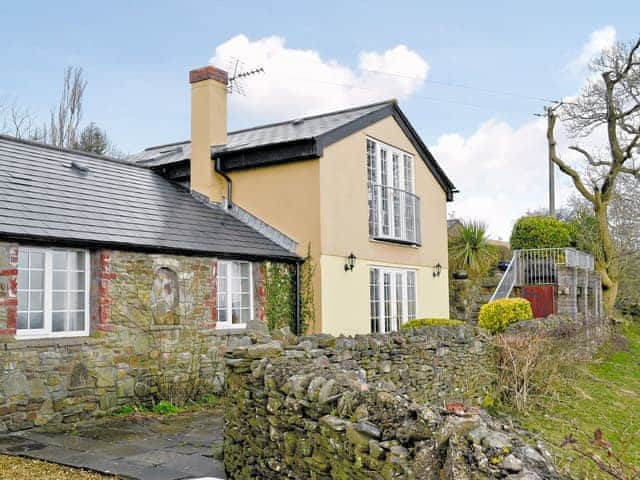
Large property for holiday let in Glamorgan near Cardiff with 3 bedrooms, sleeps 6, No pets, Barbecue, Pub within 1 mile, Cot Available.
View Meadow Croft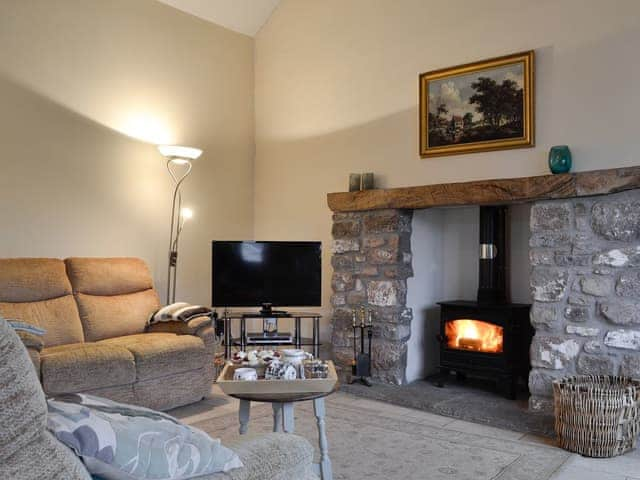
Holiday house in Glamorgan near Gower Peninsula with 3 bedrooms, sleeps 6, Pet friendly, Barbecue, Ground Floor Facilities, Pub within 1 mile, Sea View, Baby and Toddler Friendly, Cot Available.
View The Old Byre
Holiday house in Glamorgan near Cardiff with 3 bedrooms, sleeps 6, No pets, Pub within 1 mile.
View Penny Croft - Uk10449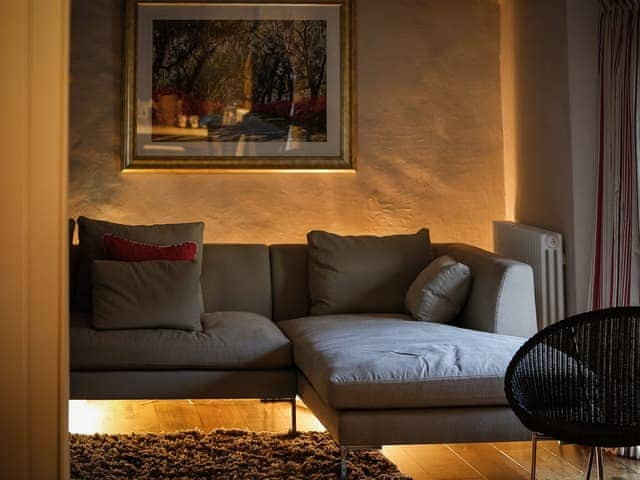
Luxury holiday house in Glamorgan near Cardiff with 3 bedrooms, sleeps 6, No pets, Golf nearby, Pub within 1 mile.
View The Coach House - Uk11892Self-catering cottages in Vale of Glamorgan, South Wales
In the centre of the Vale of Glamorgan, the visitor will find a rather attractive old market town and one of the last few remaining walled towns in South Wales - Cowbridge. It is an unusual town in as much as while it is most definitely rural, with all the charm to prove it, it also has an air of a small city about it. What surprises the visitor is that one high street is just a department store, with fashion, beauty, health, gifts, food and drink all under one roof.
There is a surprisingly large selection of restaurants, bars and real ale pubs, all justifiably boasting the best in locally sourced and produced food and drink. There's a wonderful farmers' market, plenty of farm shops and believe it or not, a vineyard as well! And the area always has an activity of some description to either take part in or visit all year round - garden festivals, folk, jazz and food events, outdoor and walking activities, even medieval jousting.
The Cowbridge area is also one of the firm favourites of walkers, ramblers and hikers. It makes no different whether you want a casual rural stroll with the family from café to inn, or a serious historical hike, you'll have no problem in finding a suitable one.
While in the Vale of Glamorgan, a visit to Dyffryn Gardens and the wonderfully restored house is a must. The Gardens are no so much 'a garden' but a series of outdoor 'rooms' surrounded by yew hedges and include sweeping lawns, an arboretum, wild garden and relaxing croquet lawn. The house, when lit up at dusk, makes a splendid sight.
Also worth visiting is the National Roman Legion Museum at Caerleon, near Newport. Wales was the furthest reach of the Roman Empire and they ruled the region from there for some 200 years. According to the legend, Caerleon was also one of King Arthur's courts. The ruins include the most complete amphitheatre in the UK, the Roman garden is a wonderful mixture of smells and sights, there is a barrack room where you can try on replica Roman armour and the accompanying exhibitions and artifacts give a unique insight into life in Roman Britain.
Rent holiday accommodation in Swansea

A unique large holiday home in Glamorgan near Swansea with 5 bedrooms, sleeps 10, Pet friendly, Golf nearby, Pub within 1 mile, Cot Available.
View St Albans Church - 28165
Self-catering accommodation in Glamorgan near Swansea with 5 bedrooms, sleeps 10, Pet friendly, Golf nearby, Pub within 1 mile, Baby and Toddler Friendly, Cot Available.
View Dan-y-glo
Holiday house in Glamorgan near Swansea with 4 bedrooms, sleeps 7, No pets, Golf nearby, Pub within 1 mile, Sea View.
View Sea EscapeVisiting Swansea, South Wales
Unbeknown to many, Swansea, the second city of Wales, was once one of the key centres of the world's copper industry. In fact it once had the nickname 'Copperopolis'. However, the name Swansea owes much to its Nordic roots, as it originally developed as a Viking trading post and was called "Sveinsey" in Norse. Swansea only became a city in 1969 as a mark of commemoration of the investiture of Prince Charles as the Prince of Wales.
There is much evidence in and around the city of its importance as a port for the trade in hides, cloth, wool, wine and later, with the onset of the industrial revolution, coal and copper smelting. During the 19th Century, zinc, tin and arsenic were processed with tinplate and pottery being produced, and there are some museums in the city well worth visiting that trace this important phase in the history of Swansea.
Thanks to regeneration following years of decline, the city North Dock is now Parc Tawe, a major leisure complex with cinema, ten-pin bowling and plenty of shopping. It has a very visible feature in the form of a large triangular tropical plant house called "Plantasia". The South Dock was transformed into the current modern day marina which is a mixture of living accommodation, shops, restaurants, pubs and hotels, as well as a clutch of amenities and attractions that include the Swansea Observatory, Swansea Museum, National Waterfront Museum (with its impressive displays of maritime, transport, technology and retail artifacts), Dylan Thomas Centre and Theatre. While the National Waterfront Museum is one of the newest museums in Wales, Swansea is also home to the oldest museum in Wales, the Swansea Museum. Both are well worth a visit.
It is only natural that Swansea life now centres on the dock and marina areas - about three quarters of the city is bordered by the sea and Swansea Bay has a five mile (8 km) sweep of coastline complete with beach, promenade, children's lido and leisure pool.
Unfortunately, there is not much trace in the city of its famous and historical roots. Because of its importance as an industrial centre, it was a prime target during the Second World War and much of the centre was flattened. However, the Guildhall, Swansea Castle and the Morriston Tabernacle still remain. The ruins of Swansea Castle are still an impressive reminder of life over 1000 years ago.
Shoppers won't be disappointed with a visit to Swansea. There is an eclectic mixture of shops from traditional high street names to independent retailers to boutiques selling the unique. And a visit to the market takes you to the largest undercover market in Wales. There is also plenty more to see and do in the city - the Grand Theatre with its range of entertainment throughout the year, Oystermouth Castle, Singleton Park, Clyne Gardens and Victoria Park, all with something for all members of the family.
Swansea is also incredibly well-placed for a host of holiday types. To the east is the coast with its wonderful sandy beaches; to the west you'll find wonderful rural terrain with plenty of small villages to visit; and to the North there is miles and miles of wonderfully open moorland, all the way to the Black Mountains. It is worth noting that the nearby Gower Peninsula was the first area in the United Kingdom to be designated as an Area of Outstanding Natural Beauty (AONB).
Swansea also has its fair share of notable residents over the centuries. On a world-wide level, the most famous could claim to be the poet Dylan Thomas who was born and grew up in the Uplands area of the city. Other famous Swansea residents include entertainer Sir Harry Secombe, writer Kingsley Amis, Dr Who writer Russell T Davies, entrepreneur and politician Michael Heseltine, satirist Ian Hislop and actress Catherine Zeta-Jones, to mention but a few.
Visiting Neath, Vale of Glamorgan, South Wales
Neath is a town in Wales that owes its history and heritage to the Romans. As a River Neath crossing place, it has always played a pivotal part in the history of this region of South Wales. Later on, St Illtyd established Llantwit, a settlement at the northern edge of the town. The church he established was enlarged during Norman times (and is still in use today) when Neath Castle was also built.
Over the centuries, Neath became a busy market town, and expanded during the 18th Century with the industrial revolution. It was quite prominent in the iron, tinplate and steel industries. Coal mining took place in the surrounding areas, as was silica. However, the town remained close to its market roots, with a fine indoor market and municipal cattle market running to this day.
The Castle Hotel in the town has a claim to fame in that Admiral Lord Nelson stayed there on his way to meet his fleet at Milford Haven and the son of the hotel landlord at the time served aboard HMS Victory in the Battle of Trafalgar. Neath is also famous (or rather infamous) throughout Wales as home to the Trade Centre Wales which has been noted as selling the "UK's worst cars", which is a rather unusual unique selling point.
Aside from the fine indoor market, there is ample shopping in the town, with a good selection of local shops, including many family-owned speciality shops, restaurants providing good locally sourced food and several traditional and very welcoming pubs.
The Cistercian Neath Abbey, one time the largest abbey in Wales is worth a visit to see the substantial ruins that still exist and which beg the question 'how did they built it without earthmovers and cranes?'. The early 18th century landscaped Gnoll Park with lovely surrounding walks is also well worth a visit.


